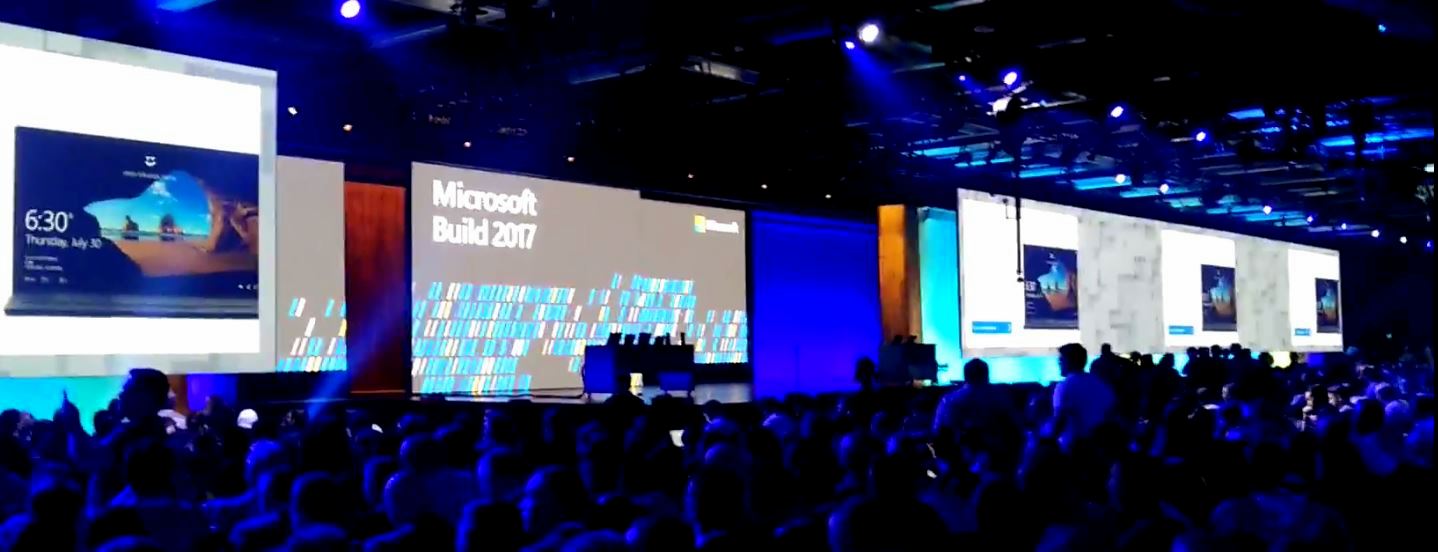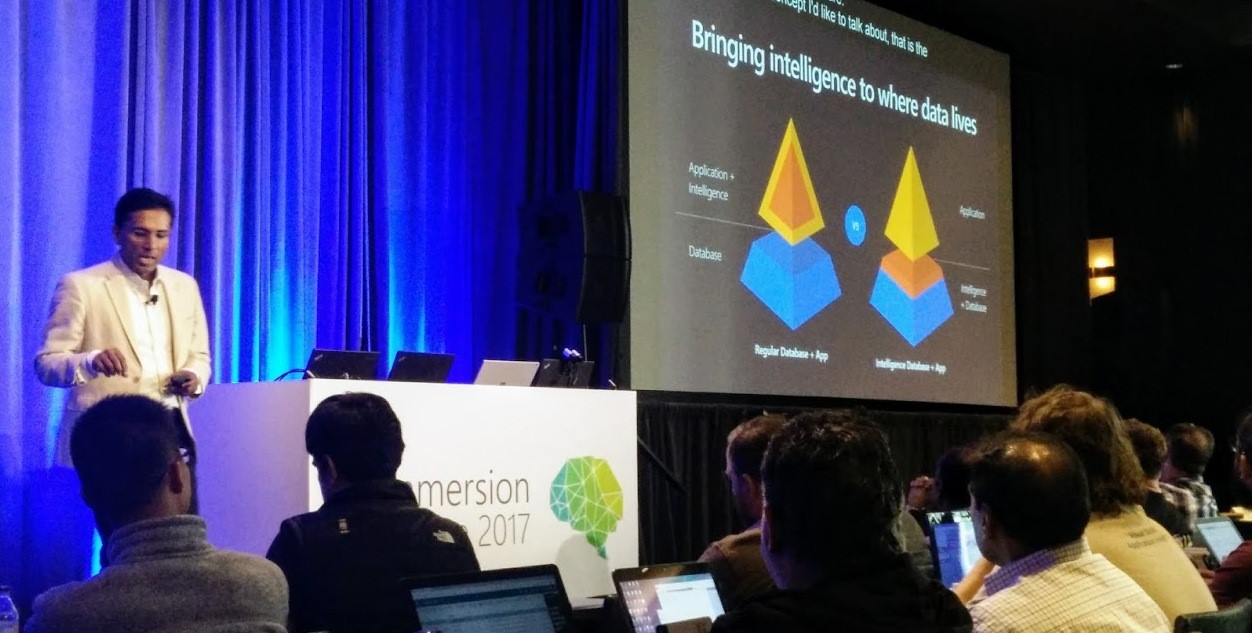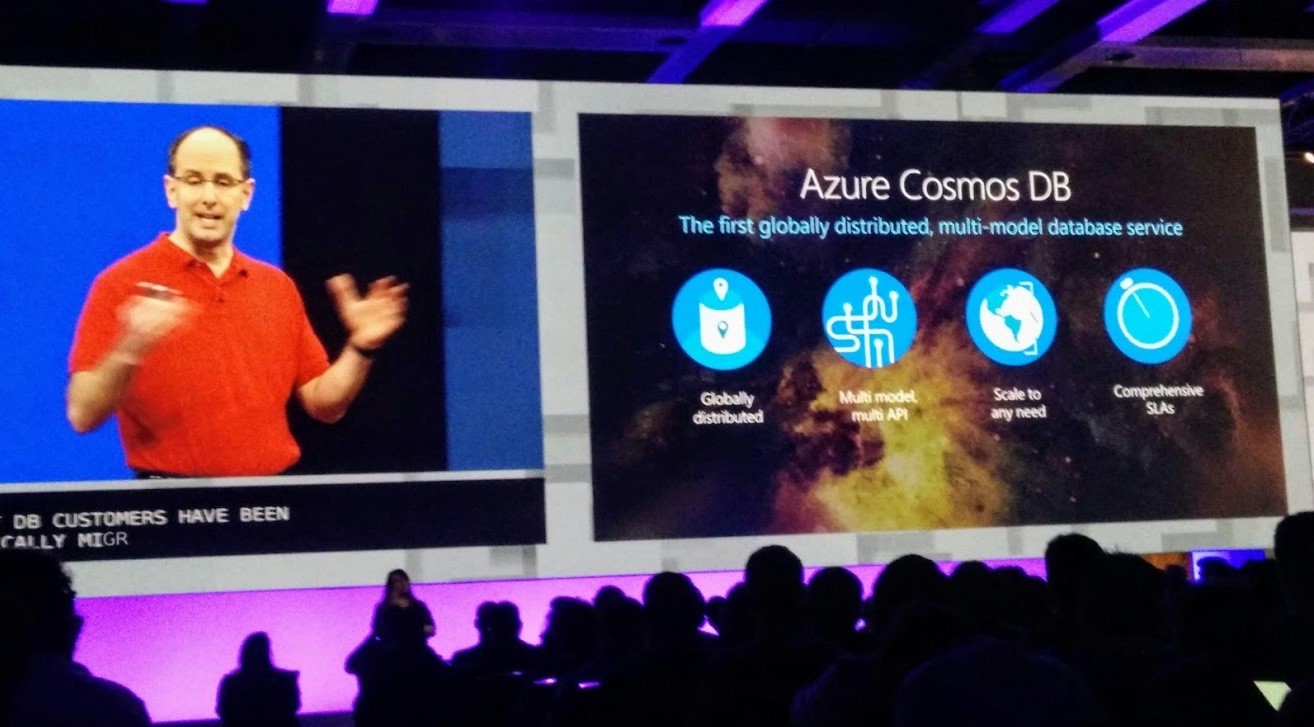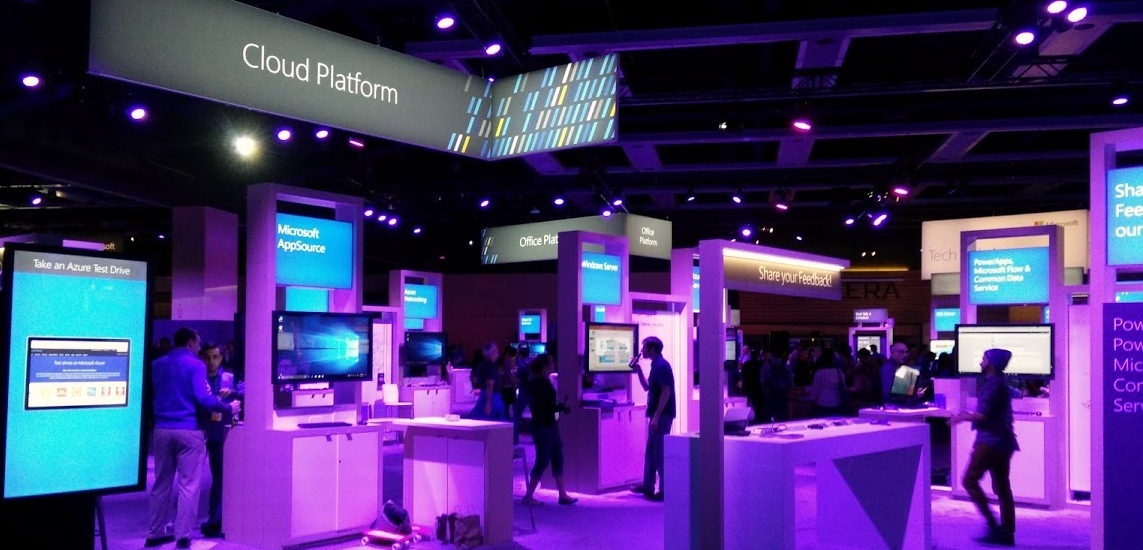The annual developer Microsoft Build Conference was held at the Washington State Conference Center in Seattle during May 10-12, 2017. The event had over 5,000 attendees and received a lot of love from the technical community. There were a number of announcements made during this 3-day conference, and in this article I will recap my learnings from a SQL Developer perspective. In the Data Platform, there were a number of new innovations, products and capabilities announced and a lot of emphasis was on using data to fundamentally transform your business. There was focus around serving Artificial Intelligence with Data, which seemed to me to be the future of Data Platform.
Microsoft Azure is a global scale cloud platform and has been expanding its reach in the past few years. During the Keynote by Satya Nadella and Scott Guthrie, it was mentioned that more than 90% of the Fortune 500 companies use Microsoft Cloud. They talked about a number of new innovations in Azure which enables developers to leverage cutting edge technology to build enterprise level applications. A number of organizations have started leveraging technologies like AI, IoT, Machine Learning and Advanced Analytics to get a deeper insight into their data, which in turn helps them to better drive their business model.

Bringing intelligence to where data lives
During the pre-Build event – ‘Microsoft AI Immersion Workshop‘, Joseph Sirosh – Corporate Vice President of Data Platform, talked about Microsoft’s investment in Artificial Intelligence and Machine Learning. He showed a number of cool demos and videos which demonstrated Microsoft’s innovation and vision to bring Artificial Intelligence in every software. The focus was to give more power to developers so that they can use Data + Cloud + AI to build the next generation of enterprise applications. Today’s AI is learning from data and hence making the transition from ‘Application + Intelligence and Database’ to ‘Application and Intelligence + Database’ – in short infusing intelligence to the database.
Analyzing the data efficiently and doing trend analysis helps organizations to make informed decision to drive their Business forward. These new technologies – Cloud, Machine Learning, Artificial Intelligence have great capabilities and power to be a disruptive force in revolutionizing how business currently operate and can totally transform their operations.

You can learn more about AI here.
SQL Server 2017 – First Commercial Database with AI built in
SQL Server 2017 is available in Preview mode currently and you can start using it in your test environments to look at the new capabilities it has to offer. Not only it is the most secure database we have currently, but it is also intelligent with Artificial Intelligence infused in it. There has been a number of enhancements to the core database engine and below are few of the awesome features which SQL Server 2017 has to offer:
- Ability to run SQL Server 2017 database in any platform now – be it Windows Server, Linux or Docker based systems.
- Support for Microsoft Graph Database.
- Performance enhancement with adaptive query processing. It learns from the prior query executions and optimizes itself for superlative performance.
- Automatic Query Tuning of your T-SQL Queries. It is going a step further than the Query Store feature in SQL Server 2016 where you could monitor and view your regressed queries over a period of time.
- Machine Learning Support with R and Python.
- New string functions and enhanced performance for natively compiled operations.
- Execute Deep Learning Framework like Cognitive Toolkit against data stored inside the database.
- Top notch Security for your application data.
- Pause/Resume online rebuilds of indexes so that you have better control and do not impact your application performance.
- Machine learning based threat detection and suspicious database activities.
Even though it is currently in Preview, there is a Production go live license – indicating that it is Production ready. Lot of organizations are embracing SQL Server 2017 and it has all the potential to be a game changer for them.
You can download the SQL Server 2017 Preview and learn more about its capabilities.
Introducing Azure Cosmos DB
When you host your application, there is every probability that users all over the world will have different latency/response time, depending upon the location of the data centers near them. This is not an ideal scenario. Microsoft announced the release of Azure Cosmos DB – a globally distributed, multi-model managed database service which can help scale your application and can provide data at a high speed across the globe, with a millisecond load latency.
Azure Cosmos DB make your data highly available. It allows you to scale your data globally anytime you need. It is a schema agnostic database service and can support various data models like documents, graphs and key-value pairs. Its ability to automatically index your data provides the lightning fast data access speed. It will be highly scalable across geographical regions (millions of transactions per second) and Microsoft will offer SLAs for performance, latency, uptime and consistency.

You can learn more about Azure Cosmos DB here.
Availability of PostgreSQL and MySQL as a Database Service
Until now, SQL Server was the only database which was available both on premises and as a fully managed database service in the cloud. This has been a setback for developers who preferred to work with MySQL or PostgreSQL database. Based on customer demand, Microsoft announced that they will now support two new managed database services in Azure – MySQL and PostgreSQL. This will enable developers to stand up a MySQL/PostgreSQL database in minutes and scale on the fly, without any downtime.
When your database is running as a managed service in Azure, you are freed up from lot of the manual administration work required for your database like patching, periodic backups, monitoring and more. Resources required for your workload can be easily added. If you expect your application usage/traffic to go up for a temporary period of time, you can scale it up during that timeframe and then scale it down – all of this at the expense of no application downtime and there is no need to purchase any additional infrastructure.
You can learn more about these new database services here:
Introducing Azure SQL Database Migration Service
Migrating Production on premise database to cloud is always a challenge and has been an impediment for multiple organizations to take that final leap towards moving their infrastructure to Cloud. With the release of the new Azure SQL Database Migration Service, it is lot easier to move your SQL Server or other 3rd party databases (like Oracle and MySQL) to Azure SQL database. It provides an automated workflow to inspect your current database and will guide you through the various changes required for the migration to be successful.
The Migration Service consists of a simple 5 step process to migrate your on premise SQL Server instance to Azure SQL Database:
- Enter the Target Server Details
- Enter the Source Server Details
- Select the databases that needs to be migrated
- Enter migration settings like the source database server backup location
- Verify the summary and run the migration.
Once the database migration is complete, all you need to modify is the connection string in your application to point to the new cloud instance and there you go. That is it – no other modifications are required. The migration process is highly simplified now and hence makes your journey to cloud more pleasant and faster.
New Azure Mobile Application for Android and iOS
Microsoft announced the release of Azure mobile apps for Android and iOS – which will allow system admins to monitor their applications through mobile devices on the go. You can get real time notifications in your mobile, in case of any critical issues and will also be able to take few actions like restarting a virtual machine through your mobile itself. This will be hugely beneficial for On Call personnel, since they will be able to stay connected to the cloud and have basic level of monitoring, push notifications and corrective action taken in case of an emergency. The mobile app is available for download in Google Play Store and iOS app store.
You can view detailed information on the Azure Mobile app here.
Snapshot Debugger Preview for Azure
Debugging issues in Production is tough, especially when your application is running in cloud. Sometimes analyzing the database logs, trace files and IIS logs might not be sufficient to identify the issue in a Production environment. Not to forget the limited debugging option for a Production application. In one of my earlier projects, we had to troubleshoot issues with specific users/workflows in Production environment. It was a painful experience, since these issues could not be recreated in other environments and were reported only in Production.
In such cases, capturing a snapshot when an exception is thrown is helpful because it shows the state of source code and the values of the variables at that point. This will give you more insight on the Production issues and help you to resolve it faster. This is exactly what the Snapshot Debugger for Azure tool does, without any impact on the Production environment. By adding Application Insights to your .NET application you can enhance the production debugging experience. During the Keynote, Scott Hanselman showed a demo how to remotely debug a .NET application running in Azure through Visual Studio 2017 IDE.
Additional details are in the link below
Introducing the Snapshot Debugger preview for Azure
Conclusion
Microsoft Build was a great developer conference and I found the Keynotes and Technical Sessions to be of immense value. Apart from these sessions, there was the Hub area, which consisted of a number of booths and I was able to interact with different Sponsors and Microsoft Engineering Team – Visual Studio, Windows, Azure and more. As the conference came to an end, the biggest value for me apart from learning the latest and greatest in technology, was the connections I was able to make with fellow attendees and Microsoft Engineers.

If you are interested to learn more about the other Microsoft Build announcements and hear few of the technical sessions, then make sure you go the Channel 9 site to watch all the recordings.
- What’s new in SQL Server Management Studio 17.4; SQL Vulnerability assessment and more - December 26, 2017
- Review of SQL Cop for SQL unit testing - September 29, 2017
- Querying Microsoft SQL Server 2012/2014 – Preparing for Exam 70-461 - September 8, 2017

